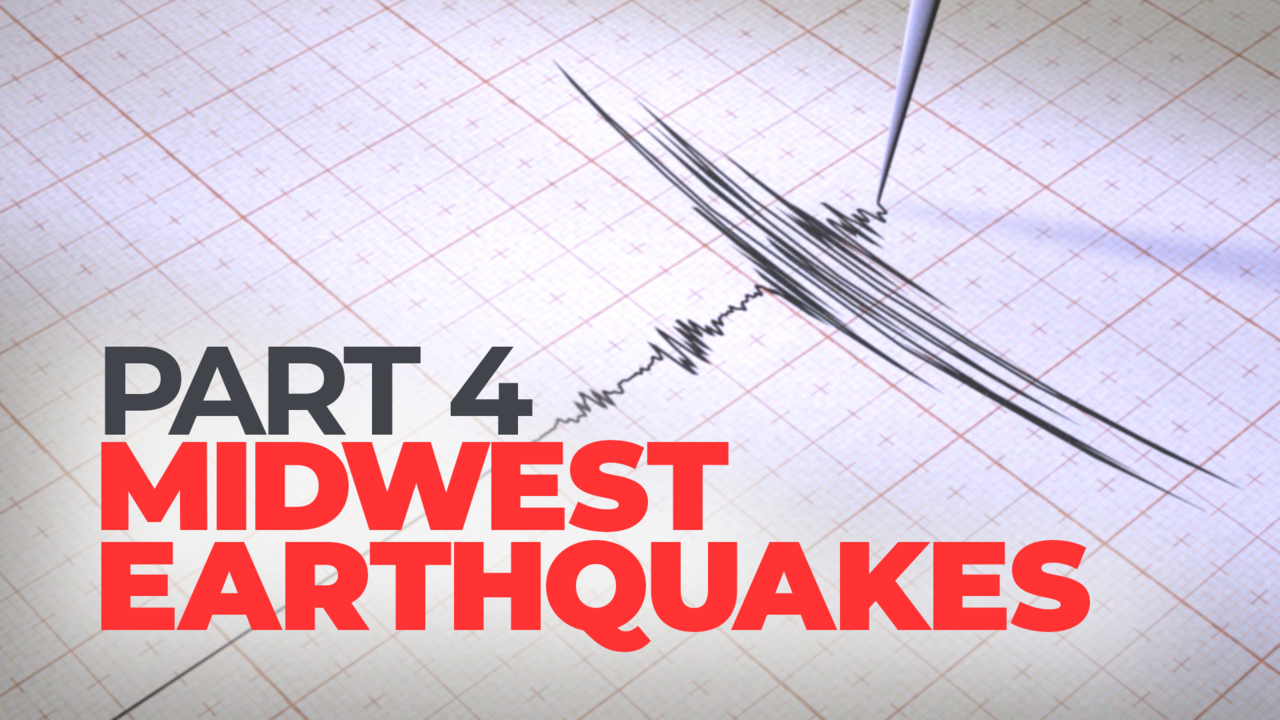
MAHMOUD BENNETT: BY NOW, YOU UNDERSTAND, A LARGE EARTHQUAKE IS EXPECTED TO ROCK THE MIDWEST.
THE NEW MADRID SEISMIC ZONE IS A CLUSTER OF FAULT LINES THAT RUN THROUGH MISSOURI, TENNESSEE, AND ARKANSAS. IT IS THE MOST ACTIVE SEISMIC AREA IN THE U.S. EAST OF THE ROCKIES. EVERY YEAR, HUNDREDS OF SMALL EARTHQUAKES OCCUR IN THE ZONE.
JAMES WILKINSON | EXECUTIVE DIR., CENTRAL UNITED STATES EARTHQUAKE CONSORTIUM: “Until a brick hits you in the head, most people don’t react. And these small earthquakes don’t do a lot for increasing the awareness that this is a real threat.”
HE SAYS EVEN A MEDIUM SIZED EARTHQUAKE COULD IMPACT AS MANY AS 8 STATES IN THE CENTRAL AND EASTERN U.S.
DR. THOMAS PRATT | GEOLOGIST, UNITED STATES GEOLOGICAL SURVEY: “So, the emergency management community, I wouldn’t say they’re totally prepared for this, but they’re aware of it and they’re trying to prepare for it. It’s kind of hard to prepare for a disaster of this scale but they’re trying,” Pratt said.
THERE ARE SEISMIC STATIONS ACROSS THE COUNTRY AND THE WORLD TO HELP STUDY ACTIVITY IN THE ZONE. EXPERTS TELL US RESEARCH AND EDUCATION ARE THE BEST WAYS TO PREPARE FOR A LARGE-SCALE EVENT.
WILKINSON: “Whether its sheltering, transportation, there could be some evacuation issues, getting resources into the impact area those are all shared problems that we’re going to have to deal with.
WILKINSON: “Memphis and St. Louis have invested millions of dollars, federal mitigation dollars, working through the state emergency management agency to address their risk.”
BUT THE BEST THING YOU CAN DO IS REMEMBER THE DRILL…DROP, COVER AND HOLD ON!
WILKINSON: “The seconds that you’re standing there thinking about why the ground is shaking, unfortunately things are beginning to fall.”
PRATT: “I wouldn’t lose that much sleep over it because yes, you’re living near a seismic zone. And there could be a large earthquake that could cause damage and could cause injury. But we don’t know if that’s going to be tomorrow, we don’t know if it’s going to be 100 years from now. So, it’s not something I would stay awake at night dreading. But it will eventually happen.”






